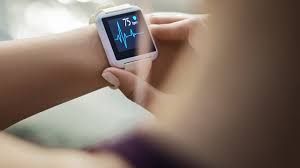Telemedicine –Has it arrived yet?
A reality check on this newly refurbished healthcare delivery model in the backdrop of COVID-19 Pandemic By Raghuram Janapareddy There is nothing novel about Telemedicine in healthcare delivery. The technology and this mode of engagement between

A reality check on this newly refurbished healthcare delivery model in the backdrop of COVID-19 Pandemic By Raghuram Janapareddy
There is nothing novel about Telemedicine in healthcare delivery. The technology and this mode of engagement between practitioners and patients existed for many years, albeit with many caveats and restriction and even threats.
Thanks to COVID-19 Pandemic, hitherto improbable healthcare reform demanded relentlessly by healthcare practitioners, NGOs and special interest groups, has overnight became an acceptable and kind of mainstream healthcare delivery channel in many parts of the world.
The greatest relief to the locked-up non-COVID patients during this pandemic, is the opportunity to consult a Doctor through all possible virtual methods. Thankfully, even the pet parents are consulting the veterinarians using the Telemedicine platform.
In my opinion, Telemedicine suddenly aroused interest of the entire healthcare eco-system, mainly due to the survival instincts, rather than for its novelty. More as an“only-resort” than as a “premeditated strategy”. Well, as the saying goes, “necessity is mother of all inventions”. As time passes, Healthcare Pundits will be seen engaged in long debates on, “Has Telemedicine come to the rescue of the Healthcare Practitioners or the Patients”.
During the lock-down, I had the compelling reason to use many Tele consultations for my family. While I got mixed experiences from these encounters, I cannot but appreciate the power of this delivery channel, but also spotted some areas that needed urgent attention.
Having explored a bit more on this topic, this is an attempt to share some of my observations, especially in the backdrop of COVID-19 Pandemic.
What’s in a name?
Tele-medicine, Tele-health, Tele-consultations, Tele-diagnostics, Tele-radiology, Remote Monitoring etc. etc. so many terminologies, but the Telemedicine leads the pack and stays here for long. Though I personally feel “Telehealth” is a better representation for this delivery channel, as a logical extension to Primary, Secondary and Tertiary Healthcare channels.
 The facts that should not miss your attention
The facts that should not miss your attention
- First and foremost, there is a radical change in the mindsets of patients and practitioners “There is no need to visit a clinic or a hospital for every ailment”. This helped in reducing the burden on the flailing healthcare infrastructure.
- Sensing the urgency and realizing the power of TelemedicineChannel, Government was quick to release the Telemedicine guidelines on 25th of March 2020 and followed it up with a Gazette Notification on 14th May 2020. A remarkable approval timeline from a Government.
- Particularly in single doctor clinics and smaller nursing homes, HCPs started exploring all possible telemedicine channels to help (keep) their patients. This helped taking the burden off the larger institutes, which had either shut their doors for general consultations or shifted their focus for COVID only treatments/hospitalization.
- Prescriptions became digital, thus reducing the dispensing errors.
- The consultation time windows widened and the average consultation times slightly improved.
- There may or may not be any correlation, butI guess there are lesser deaths due to avoidable Hospital Acquired Infections (HAIs).
It is a long way before the true potential of Telemedicine can be exploited
Going forward, it is expected that the foot falls into the hospitals may be reduced considerably, even after the COVID era. Hence the Industry is in a hurry to regain the lost business, retain their existing clientele and aspire to attract new customers. And they are betting heavily on this delivery channel under the home healthcare and remote monitoring service portfolio.
 But, if Telemedicine must emerge as a compelling healthcare delivery channel, I think the inventors, investigators and investors have to work jointly and immediately and on the following areas of improvement.
But, if Telemedicine must emerge as a compelling healthcare delivery channel, I think the inventors, investigators and investors have to work jointly and immediately and on the following areas of improvement.
- Make the Telemedicine software robust and fail-proof
Patients cannot afford to face audio and video link failures. They are not in a hospital, where someone can come to their rescue in emergency situations.
- Don’t play around with consultation fees
HCPs may want to make up for the lost revenues using surge pricing tactics and some are even recalibrating their consultation fees, taking undue advantage of the current situation. As distance is in comprehensible in tele-consultation channel, customers may shift loyalty easily, if they find alternatives.
- Medical Notes/Observations are as much important as the drug prescriptions
Medical notes/observations, diagnosis, diet advisory, precautionary notes are as important as the drug prescriptions. These notes are important for future consultations. Patients are not in the habit of making notes and they miss out on important precautions.
- Compliance to Telemedicine Guidelines is mandatory
It may take a long time before the telemedicine technology is matured and help HCPs comply with the guidelines issued by the government. But the onus is on the HCPs to comply with certain mandatory aspects, such as patients’ consent, storage of health records etc. Hence the HCPs should ensure they have alternative mechanisms in place to comply with these guidelines, either with the help of other technology channels or without it.
- Technology Convergence is the need of the Hour
In majority of the institutions, the HIMS, EHR, Lab and Imaging Data etc. are not yet fully integrated. They are often consolidated manually or through some software interfaces, with real data hidden in scanned documents. But Telemedicine channel may provide an opportunity to set things right.





